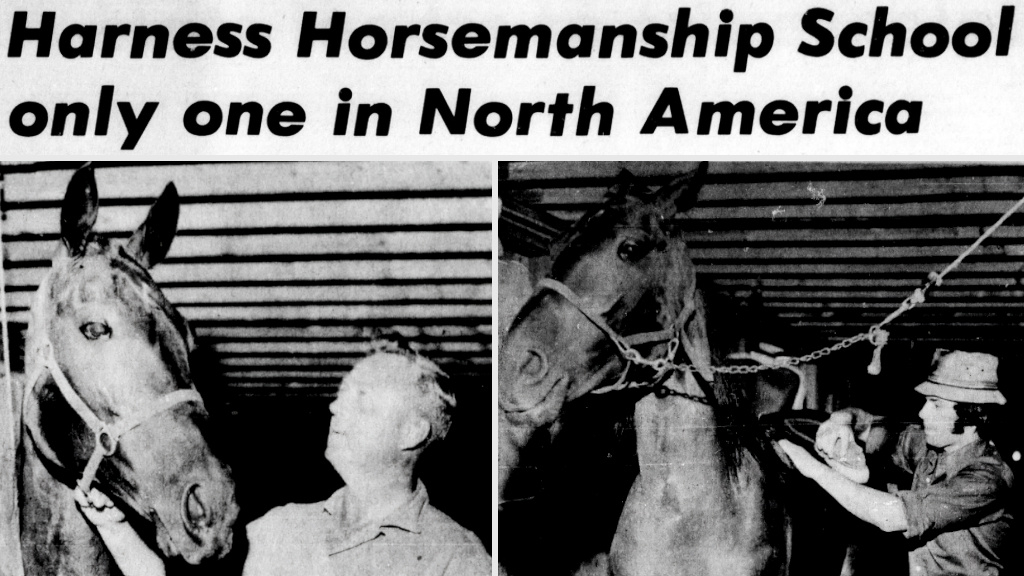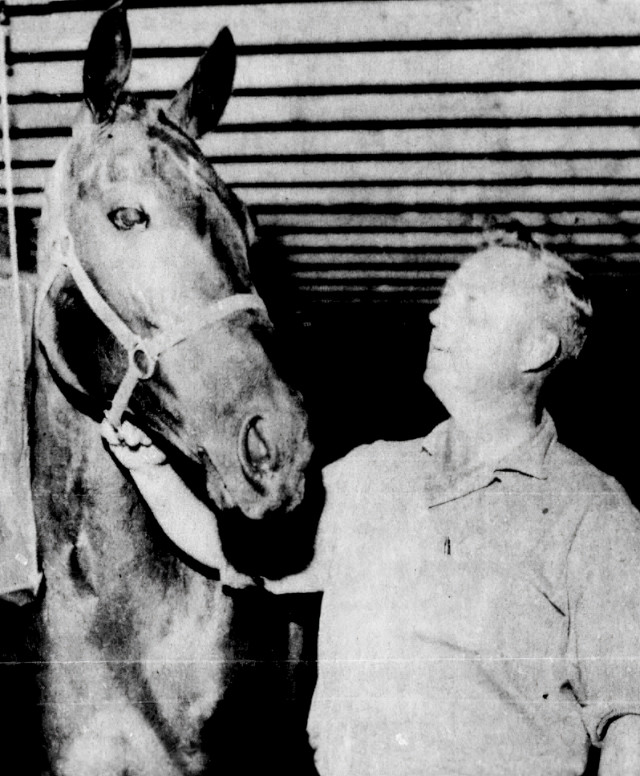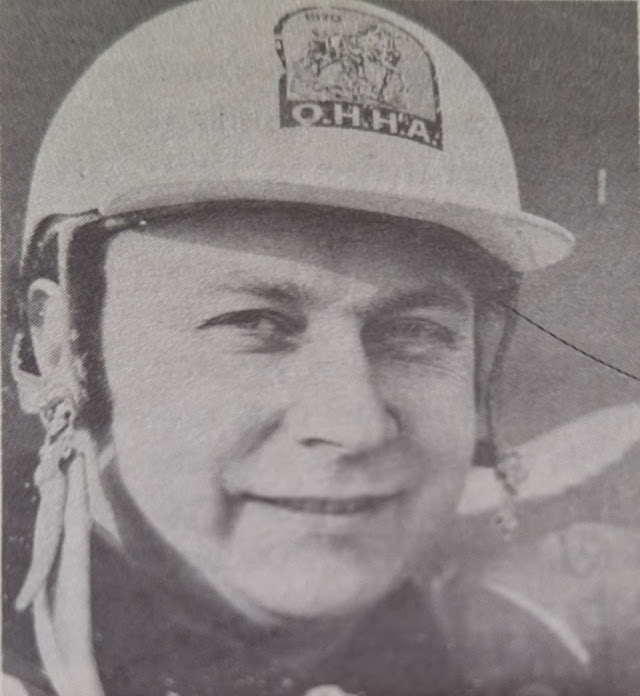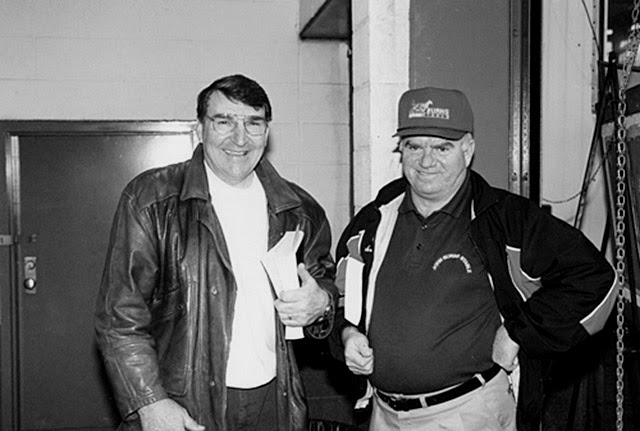SC Rewind: Remembering The School Of Harness Horsemanship

In this week's Rewind, Robert Smith recalls a somewhat unusual — and hopefully interesting — story about a school that once existed where “would-be” horse people could learn their lessons. Once their course of study was completed, their hopes of working with harness horses were a step closer to reality.
In 1963, when the Ontario Jockey Club decided to build a brand-new, state-of-the-art facility known as Mohawk Raceway, it ushered in a new age in Central Ontario harness racing. In previous eras, the focus of attention was more likely on the Metropolitan Toronto area; this move was a radical departure. The stabling area at Mohawk was literally carved out of the woods.
Relatively soon after the start-up of Mohawk came many fine people from diverse backgrounds who were engaged in some form of activity connected to the sport of harness racing. They settled in various areas, on all kinds and sizes of properties. They soon collectively occupied some 1,200 acres, making it one of the most popular horse havens in the province.
In the area just east of Mohawk was a school for horsemen, owned and operated from around 1968 by Glen Anderson — a horseman of note as well as an auctioneer and racing official. He had a vision, and he put it into practice.

Billed as “the only one of its kind in North America,” Glen Anderson’s School of Horsemanship was unique, to say the least. He offered several courses on the training and grooming of horses for folks of all ages.
An auctioneer for some 17 years, he had also worked with cattle earlier in his career. In a write-up published in a small local newspaper, he was quoted as saying, “I’ve always worked with animals and enjoy being around them.”

Glen Anderson, founder, owner, and head instructor at the Anderson School of Horsemanship, is pictured at his farm.
Apparently, this new idea came to him as he was driving around the countryside. He saw a sign advertising a riding school. They taught people how to ride a horse—so why couldn’t he start a school that taught all about harness horsemanship? Thus began his newfound calling, which he initially called a “brainwave.”
He conducted the training sessions himself since he had a wide range of qualifications. He was already a trainer and driver, a racing official, as well as being an owner and breeder of Standardbreds. His location was ideal—it was at the same 401 exit as the fairly new Mohawk track. He had just about everything needed to conduct his newfound business close at hand.
His school offered a ten-week course several times a year. He also offered a two-week course. People from fairly distant locations were often involved, and they were most often able to find lodging at various spots in the immediate area. Many U.S. “students” were among the attendees. He found it necessary to require advance enrollment in order to properly plan.
“Twenty applicants is my limit,” he said. “I handle all the training myself, and twenty is all I can manage at one time.” The ten-week course was conducted once a week, with the option of either Wednesday or Saturday. Often, people in the course were working with horses that were being prepped for actual racing.
The course included a wide range of subjects, including how to groom, harness a horse properly, apply bandages, and provide daily care, as each horse’s needs differ. Students were taught how to properly bathe a horse after a workout (or a race) and also all about “cooling” them out, which involved plenty of walking.

An unidentified student at the Anderson School works on grooming a horse as part of his daily routine to learn as much as possible about becoming a future participant.
Beyond the course, the Anderson farm—better known as “Haw Lea”—also boarded and trained outside-owned horses. A set monthly fee could be arranged, which included care, feeding, and training if necessary. If an owner wished to provide their own trainer, that could be accommodated.
The “home” farm layout included a regulation-sized track, and Glen trained as many as he could handle himself but preferred to leave the race driving to others. He stated, “I’d sooner see someone else drive; I was never fond of driving.”
In addition to the main “campus” at Haw Lea, Glen had a second location in a nearby town called Freelton, about a ten-minute drive from Campbellville — very much in the same general area. The fellow in charge of that site was Gary Crowe (at least in the early years), a man well known in the sport and very capable in all aspects.
Also in the early years, a homegrown employee was part of the operation: a teenaged son of Glen’s named Scott, who was eager to join in, in a sense following in his father’s footsteps, with plans to eventually become a vet. While in high school, he spent his summers alongside five men who were all experienced trainers and grooms at the track. (See note below.)
In the first few years, over 200 people with diverse backgrounds had taken the course. Glen stated that people from every walk of life had been involved as students. That included housewives, secretaries, lawyers, teachers, artists, and engineers, to name a few. Once they had taken the course, everyone was encouraged to return for a friendly visit whenever possible.
He proudly stated that one person who graduated from his school (pictured below in today’s quiz) had four pacers that earned him $20,000 in one year. Anderson was a firm believer in the course he taught but was quick to point out that for your $100 enrollment fee, “You won’t learn everything in two weeks!”
Glen Anderson’s story, to me, is an interesting one. His life in the sport was not always an easy one, and he faced a number of hurdles inherent to this business. One large event nearly resulted in wiping out his operation.
Not too long after starting the school, he faced a huge and devastating setback. In August of 1969, a fire ravaged his farm buildings. Some of the horses and much of his equipment were lost. “Things looked grim,” he said — which was putting it mildly. Within a year, after a lot of faith and hard work, he was back in business and conducting classes again.
On a personal note, I can recall meeting Glen Anderson many “moons ago.” (I was probably tagging along with Bill Wellwood at the time.) While I was not directly involved in the conversation, I can recall what was discussed. He said that one of the problems encountered while auctioneering was a “dry throat.” His experience taught him that the best medicine to combat that malady was good old “Coca-Cola.”
Note re: Scott Anderson – The young fellow mentioned above and his “dream” to become very involved in harness racing — and also to become a veterinarian — all came true (not all of life’s plans do). He became a trainer and driver of note and also enjoyed a lengthy career as a vet. I believe he is now living in retirement and resides just around the corner from “Haw Lea.”
Quote for the Week: “Laughing at our mistakes can lengthen our own life. Laughing at someone else’s can shorten it.” — Cullen Hightower
Who Is It?

In an old 1974 Factbook issued by the Ontario Jockey Club, the following item was included: “[Pictured person] learned the basics of the sport at Glen Anderson’s School of Horsemanship in Campbellville.” It pertained to the gentleman pictured above. Who is that man?
Who Else Is It?

Can you identify these two gents in a photo taken quite a few years ago at the Harrisburg sale?
(The correct answers will be posted here by Robert as a comment in a few days.)


This week's picture answers
This week's Quiz photos were once again no problem and quite easily solved by our experts. Correct answers are shown below:
Who is it? was Ron Pestell, a fellow who attended the harness horsemanship school and eventually claimed three horses in 1969. In1971 he started driving and remained in the sport for many years.
Who else is it? was a pair of "Johns. " On the left, John Ferguson former pro hockey great, and later involved in many facets of harness racing. On The right was John Burns, longtime non -driving trainer of many great performers.
Thanks to everyone.
Glen Anderson's School
Thank you so much for sharing this story Robert. This one has a bit of a personal touch to it. Len Feigman took this class through Glen and it is how our stable started (Barlen Stables). My mother named the stable after Len being a lawyer (Barrister) and his first name. Visited with Glen so many times over the years.
ron pestell. john ferguson…
ron pestell.
john ferguson and john burns
Who is it???
Who is it???
Ron Pestelle
Who else is it??
John Ferguson
And
John burns
Who is it ? Who else is it …
Who is it ? Who else is it John Ferguson John Burns
rewind
Marty Adler
John Ferguson, John Burns
Who is it.Ron Pestell Who…
Who is it.Ron Pestell
Who else is it John Ferguson and John Burns.
Ron Pestell who I believe…
Ron Pestell who I believe started his own school. Fergie, Burnsie
Who is it? Ron Pestell. Who…
Who is it? Ron Pestell.
Who else is it? John Ferguson and John Burns. Drove to the 2006 Harrisburg sale with Fergie and worked with him at Windsor Raceway, what a fine man he was.